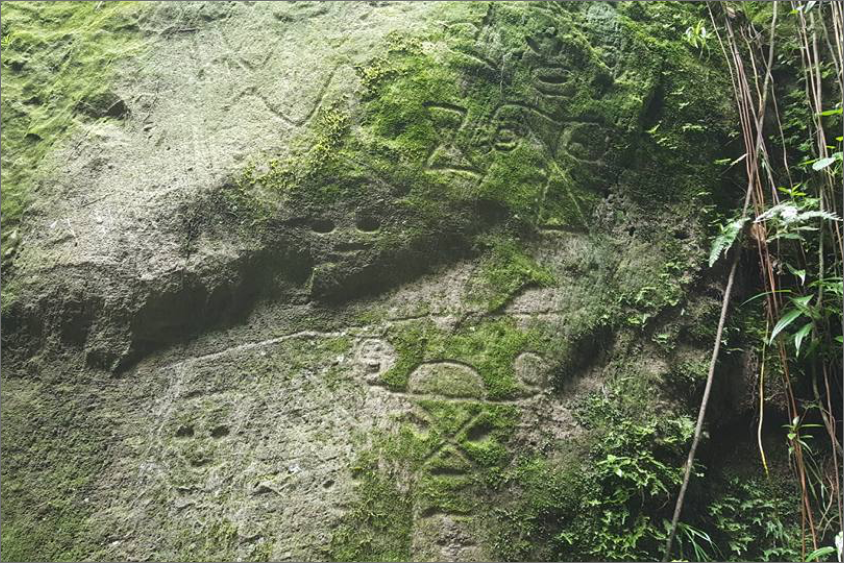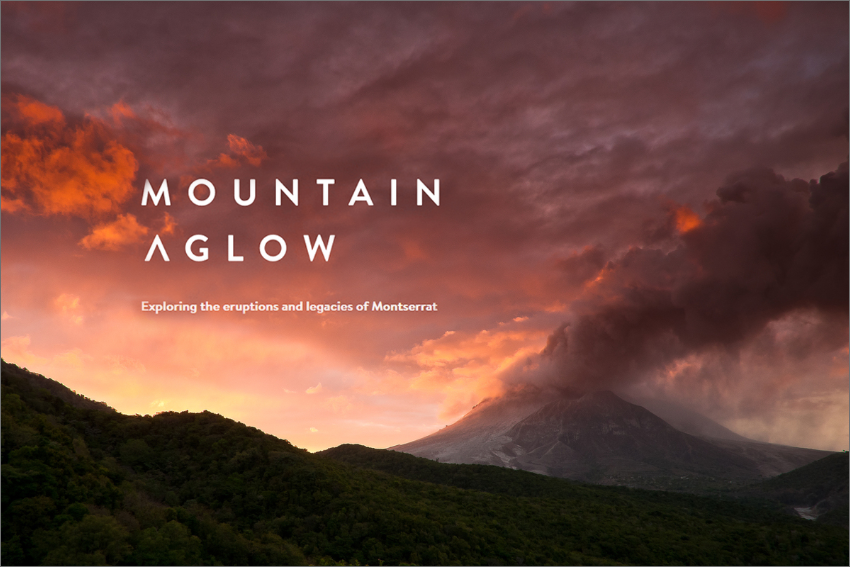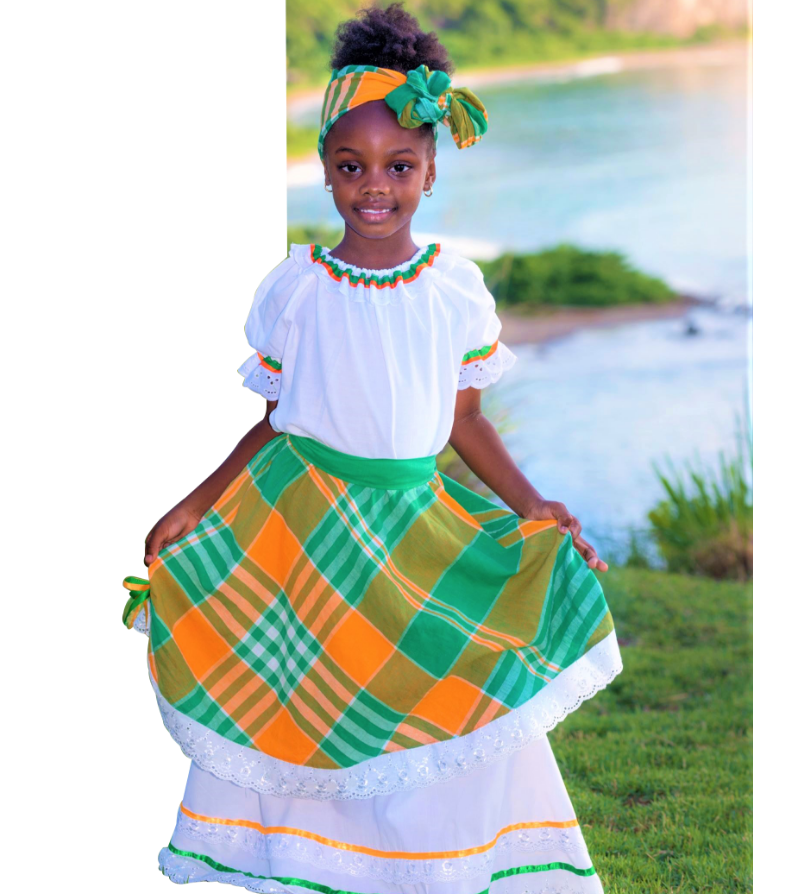
First inhabited by the Tainos c.500 BCE, Montserrat’s culture and history has been shaped throughout the years by various settlers and events.
The Tainos named the pear-shaped island Alliouagana, which means “Land of the Prickly Bush.” They lived in village settlements around the island including, Trants, Little Bay, Windward Bluff, Old Fort Point and Dagenham where they left their mark in the form of artifacts, some of which can be found in the National Museum.
In 1995, life in Montserrat was changed forever when the once dormant Soufrière Hills Volcano erupted for the first time in almost 400 years. Two-thirds of the southern part of the island, including our capital, Plymouth, was devastated and much of it remains buried beneath thick layers of ash and mud. More than half of our population has since migrated to North America and the UK.
Today, the Montserrat Volcano Observatory (MVO) monitors all activity of Soufrière Hills and, together with the University of East Anglia and partners, champions the Mountain A Glow project. This chronicles the history of the volcano and life in Montserrat before and after the eruptions, in addition to providing first-hand accounts from residents who lived through the experience.
Click here for the Mountain A Glow Experience

Montserrat’s landscape is of mysterious and startling contrasts. Zoom in and discover the people, history and wildlife that make this island hum.

Montserrat is one of 14 UK Overseas Territories, governed by a locally elected Premier and Parliament. The UK Government works with Montserrat’s Government to strengthen the island’s economic planning, emergency management, and security. The UK Government appoints a governor who lives on island, and functions as an advisor on these matters.
With a population of 5,000 residents on island means everyone knows everyone here. In fact, the camaraderie is such that all who were born here have a nickname. Included among Montserratians – or “‘Stratians” (pronounced “Strashans”) as we call ourselves – are immigrants from Dominica, Jamaica, Guyana, the Dominican Republic and Haiti, who came to help rebuild the island after the first volcanic eruption. It is therefore not unusual to hear radio advertisements in Spanish and Haitian Creole. In addition, about 100 snowbirds own second homes here, where they spend three to six months of the year.
Montserratians who live off the island, primarily reside in the UK, US and Caribbean.
We are British nationals but we have our own passport and National Song.


The city of Plymouth, St. George’s Hill, the Soufriere Hills Volcano, and the entire south of the island are in Zone V, referred to as the Exclusion Zone. Access is allowed only to Plymouth to view the Buried City and must be with a certified tour guide. Visits are strictly monitored by a police escort and there is constant radio contact with the Montserrat Volcano Observatory (MVO). There is also a siren alarm system installed around the island which is used to warn of any volcanic activity that might affect the rest of the island. It goes off every day at noon, but don’t worry, that’s just a test!

The average temperature year-round is 27°C/81°F. The hottest time of the year may run from August to October, where temperatures go up to 35°C/95°F. The coolest time of the year is from December to April, where temperatures go as low as 17°C/63°F. The peak hurricane season is from early August through the end of October.

Very few places open past 7:00 pm or on Sundays. Government offices open from 8:00 am to 4:00 pm. Banks open only on weekdays, from 8:00 am to 2:00 pm, except on Fridays, when they close at 3:00 pm. The only places that open past 7:00 pm are restaurants, pubs and night clubs. On Sundays, most mini-marts and supermarkets open for a few hours in the morning and in the evening as well.

No need to bring a power adapter, our electricity supply is very reliable! Here, most villas and guest houses carry both 110V and 220V outlets. It’s our way of being universal.

There is one bank in Montserrat – our national bank, Bank of Montserrat. Not all businesses accept credit cards and that means that you may need the services of a bank to exchange currency or to withdraw money using your credit or debit card. Currencies that can be exchanged are Pound Sterling, the US Dollar, the Canadian Dollar, and the Barbados Dollar. The EC Dollar is the official currency of Montserrat.
(This mixture makes a 23cm (9 inch) round or 20cm (8 inch) square cake)
340g*/12 oz plain flour
½ tsp. Salt
1 tsp. Mixed spice
1 tsp. Cinnamon
100 or 110g*/4 oz candied peel
1 kg/2 lb. dried fruit (preferably
½ kg/1 lb. currants; 225g*/8 ozs sultanas; 225g*/8 ozs raisins)
100g* 4 ozs blanched almonds chopped finely, grated rind 1 lemon
4 tbsp. milk
225g*/8ozs margarine or butter
4 eggs sherry or brandy
225g*/8ozs Demarara sugar.
1 tbsp. black treacle
Method
Sieve together dry ingredients. Mix peel, cherries, fruit, chopped almonds and lemon rind. Wisk eggs, milk, sherry/brandy together. Cream fat, sugar and black treacle until soft. Add flour and egg mixtures alternately to creamed mixture – do not over beat when mixing. Put into cake tin, lined inside with double thickness of greased paper round sides and brown paper and greased greaseproof paper at the bot-tom. Tie a double band of brown paper round the outside of tin, standing well above the top of it. Put in middle of very moderate oven. Bake 3 ¼ – 3 ½ hours at Mark 3 for the first 1½ hours, then Gas Mark 2 for the remaining time. In electric oven put cake in at 300° – 500° F, 150° – 180° C and after 1 ½ hours reduce heat to 275° – 300° F, 150°C. Cool in cake tin, then store in airtight tin. For very moist cake prick cold cake and pour a little sherry at intervals before icing. Cover with marzipan and royal icing.
Gives exact same sized cake as Imperial measurements.
Christmas cake recipe may be made richer by increasing fruit to 1 ½ kg (3 lbs.).
Cake then takes 1 hr longer to bake and the recipe will make one 25cm (10 inch) cake or smaller 13, 15 and 20cm (5, 6 and 8 inch) cakes. Bake at least 6 weeks before wedding.
